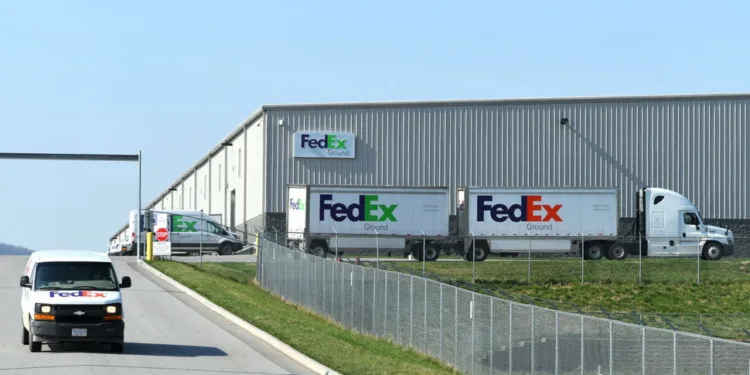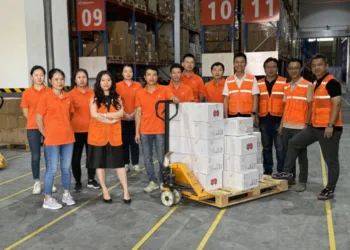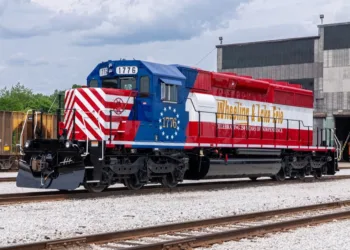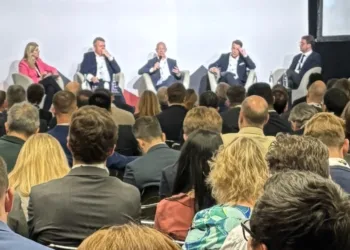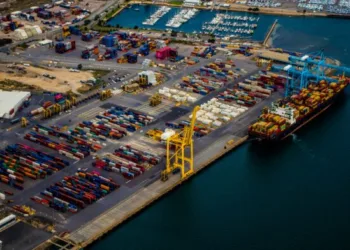European operations will be a major focus under FedEx Corp.’s plan to wring out $1 billion in additional structural costs this fiscal year, Chief Financial Officer John Dietrich said last week. He also detailed how the company’s integration of express and ground networks will change workflows and technology deployment.
FedEx (NYSE: FDX) has temporarily reassigned some experts from its U.S. ground parcel and freight units to Europe to help improve efficiency, Dietrich told investors at the Deutsche Bank Transport Conference.
“Route planning, package efficiency, condensing our stations, in-station efficiencies, all these things are being looked at and implemented. … I think we’re second to none in what we do here in the U.S. So we want to leverage that expertise and bring it to Europe,” he said.
FedEx last year merged divisions at the corporate level into FedEx Express, which makes it possible to share resources across the enterprise. Previously, FedEx Express, FedEx Ground and FedEx Services were managed as separate entities.
FedEx has set a target of $1 billion as the next phase of its Drive cost-cutting campaign, after successfully eliminating $4 billion in costs the past two years. Reduced expenditures will be realized through consolidating facilities under the Network 2.0 strategy, as well as streamlining in Europe.
Management said on the June 25 earnings presentation that FedEx expects to take out $150 million in costs from the European business by June 2027, the end of the fiscal year, primarily through network and back-office restructuring. The company last year also announced plans to eliminate between 1,700 and 2,000 back office and commercial jobs in Europe.
The integrated parcel carrier has had difficulty fully integrating its European operation since acquiring TNT Express in 2016, which Dietrich partly attributed to the complexity of European labor regulations and other rules.
Streamlining the European organization has also taken longer than expected because of a major cyberattack on TNT in 2017, damage to one of its four main facilities and cultural resistance to changing the customer experience.
“It was harming us more than helping us in terms of bringing the networks together. Sometimes change is challenging,” said Dietrich, who joined FedEx two years ago after running all-cargo airline Atlas Air.
FedEx said in June that it has reduced the delivery cost per package for two consecutive years and is focused on improving vehicle and in-station productivity, offering new digital tools for customers and growing market share profitably in Europe.
U.S. realignment requires careful planning
Dietrich also provided insight about how FedEx is managing personnel, facilities and technology as it integrates FedEx Express and FedEx Ground into a unified system. Every facility converted to a common operation provides lessons for the next consolidation, he reiterated.
FedEx is deciding location-by-location whether independent contractors from the pre-existing Ground network or employee drivers will handle pickup and delivery of Federal Express packages.
“We have a team of people dedicating significant resources to doing debriefs and downloads — what went well, what did not go so well,” Dietrich said.
A key component of the effort is changing driver behavior in a way that treats workers fairly while without impacting service levels.
“Our couriers, who are used to day-definite [delivery] may have some time-definite requirements on them. And so we’re working together with them on how they can best manage and handle our priority products most efficiently. And there’s opportunities for them to make more money, too. We’ve been reconciling our compensation programs for our contractors and our couriers and so forth, to have the most positive outcome and deliver for our customers,” Dietrich said.
Among technologies FedEx is incorporating for optimizing efficient delivery routes and vehicle mix is a route planning tool from RouteSmart Technologies, which FedEx acquired in February after many years of collaboration, he added.
One of FedEx’s founding principles is that information about a shipment is as important as the shipment itself. As an integrated carrier, all the information about the customer, types of shipments, conveyance, en-route tracking, and billing are all housed under one roof.
FedEx earlier this year formed a data and technology team, which focuses on streamlining the technology used during the package delivery lifecycle; establishing global standards across pickup-and-delivery, linehaul, sort, and clearance operations; and improving digital products and experiences for internal use and customers.
“In this current environment, we’re just looking to take it to the next level. How can we leverage AI and technology not only to help our operations, but to monetize and unlock the value of the significant data that we collect on a daily basis” from 3 million customers and 17 million packages per day, said Dietrich.
FedEx Dataworks, an internal unit tasked with harnessing data to improve efficiency, is involved with some of the next-generation data analytics underway. Dataworks is implementing dynamic scheduling tools at many U.S. surface facilities to match sort staffing with volumes and is introducing capabilities to allow certain packages to bypass station sortation and proceed directly to vehicles, which helps to maximize station capacity, FedEx said in its annual report published on Monday.
Dataworks is also enhancing facility productivity through use of machine learning and algorithms to develop more detailed and accurate volume forecasts.
FedEx is also testing autonomous, driverless technologies for handling large packages that don’t fit on conveyor systems, as well as robotic product sortation systems to sort small packages, according to the annual report.
The company last week named Vishal Talwar, an executive at Accenture Technology, as chief digital and information officer, and president of Dataworks.
Although Dataworks has helped FedEx enhance decisionmaking tools, it hasn’t accomplished its second mission of making money, said parcel industry consultant Satish Jindel in a commentary last week.
Click here for more FreightWaves/American Shipper stories by Eric Kulisch.
Write to Eric Kulisch at [email protected].
RELATED STORIES:
Richard Smith nominated to FedEx board, opening succession path to CEO
FedEx Dataworks: A gem in the right hands
FedEx appoints Vishal Talwar as chief digital officer
FedEx to close 30% of package facilities as network integration ramps up
FedEx retires a dozen freighter aircraft in efficiency move
The post FedEx sends specialists to streamline European operations appeared first on FreightWaves.



